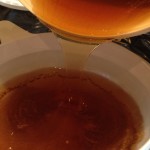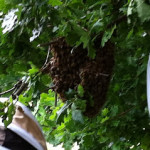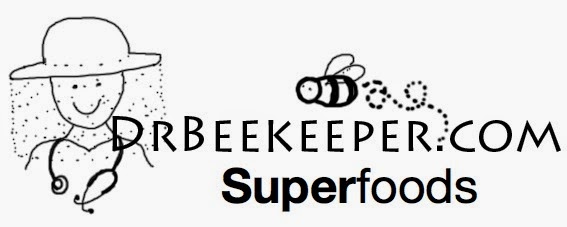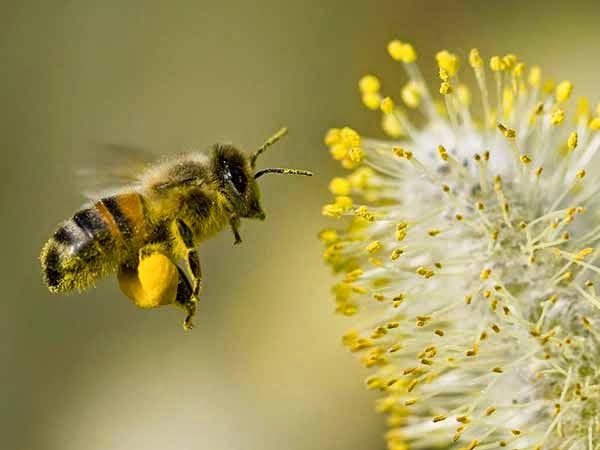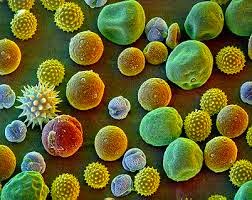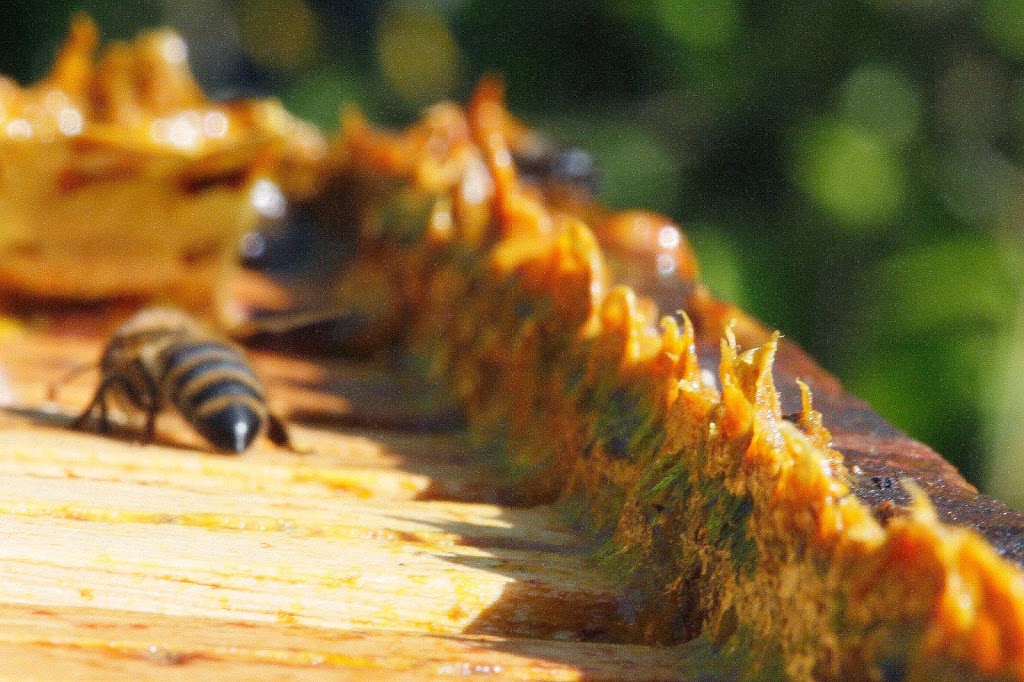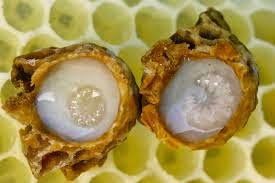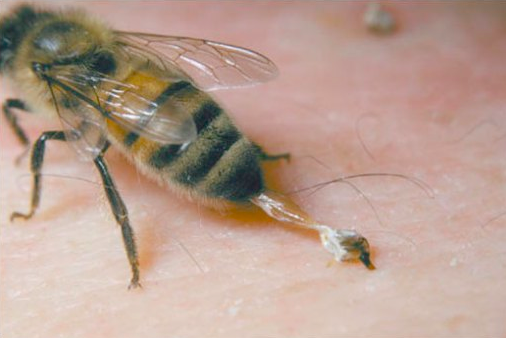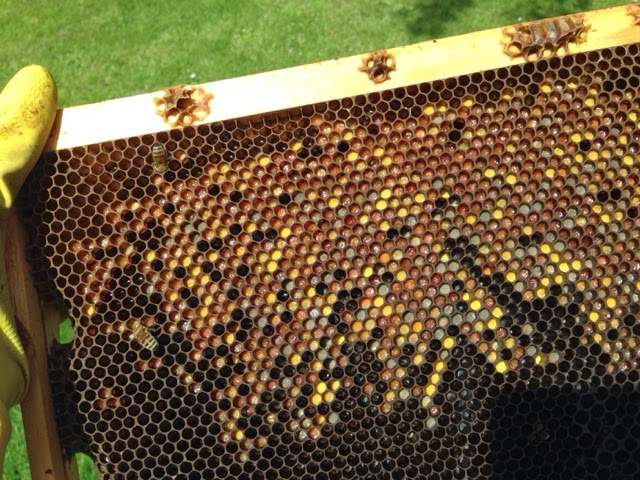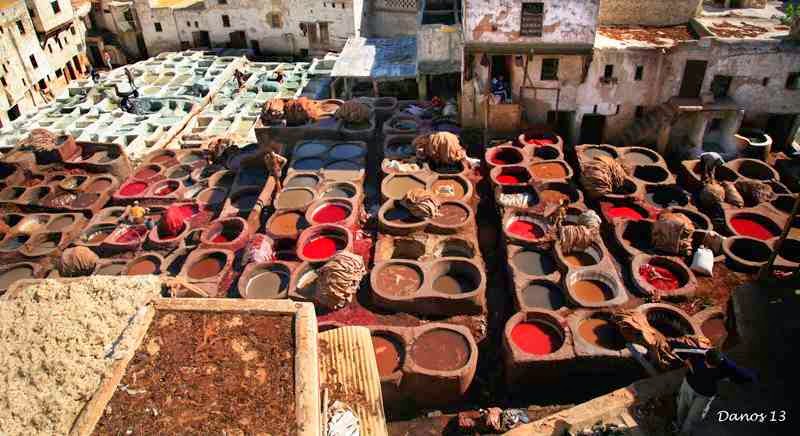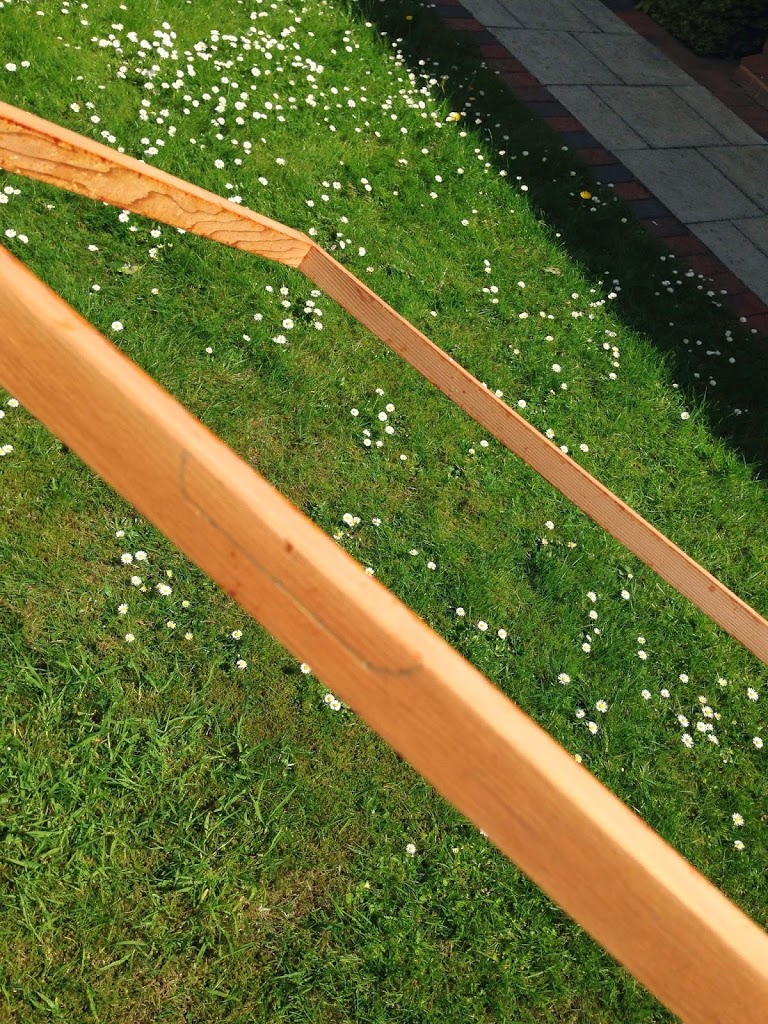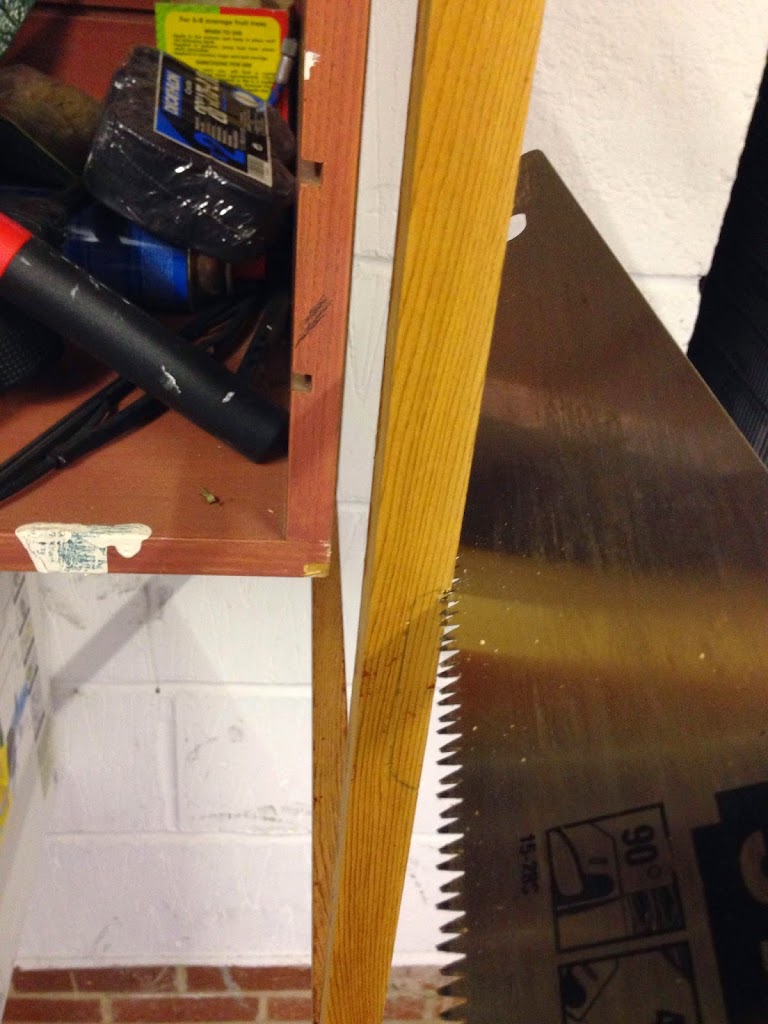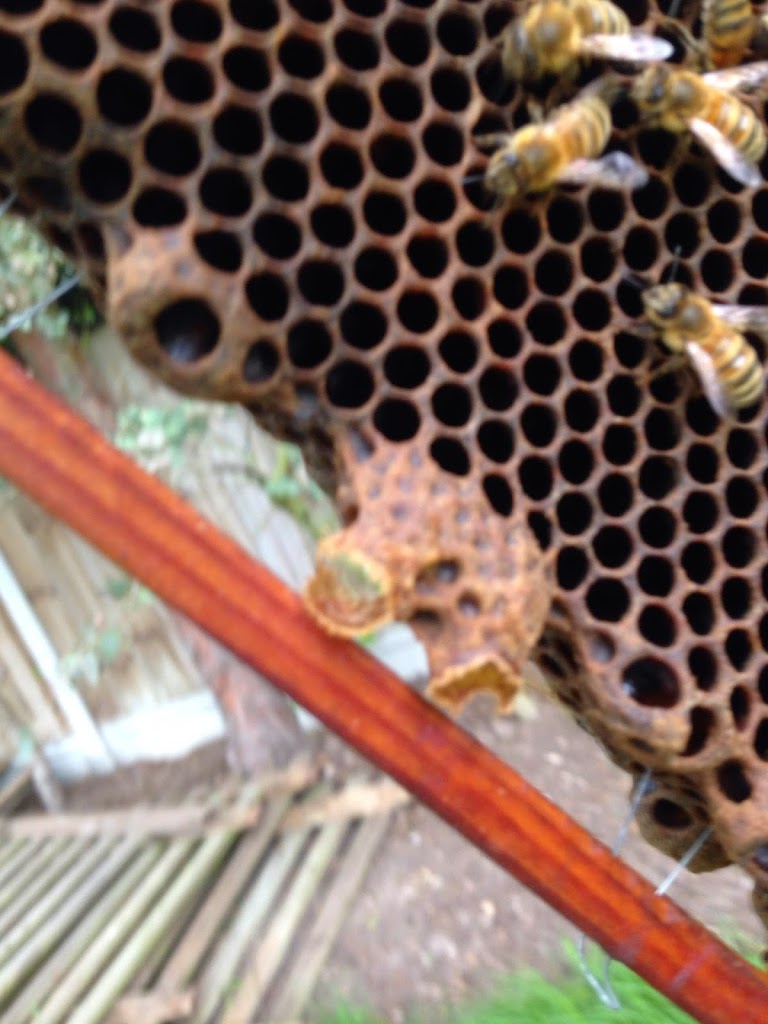
 |
| My honeybee carries out a stray bumblebee. Don’t know what it was doing there. Looks as if it had been stung and the pheromones released by this stinging might have resulted in the honeybees stinging me. |
After having kept bees for almost 2 years I have often thought I can’t believe I haven’t got stung. That is not until now! Here’s what happened… as I inspected the new nucleus hive, discussed in my last post, I noticed something quite strange – there was a bumble bee in the hive being pulled around by the honeybees. Couldn’t really understand what it was doing there.
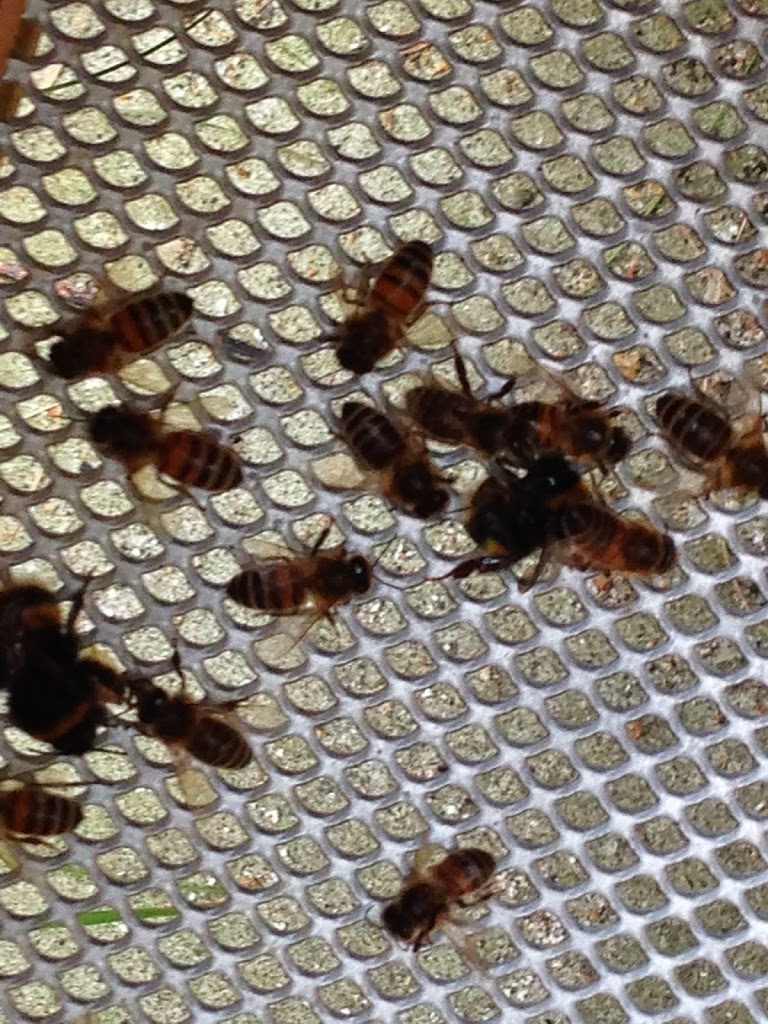 |
| You can see on the floor of the hive a number of angry honeybees ganging up on the bumblebee |
The honeybees must have been in an aggressive mood and I must’ve got too curious with the bumble bee (if that’s possible) to the extent that as I pulled back from the hive I found a honeybee stuck inside my glove. This was followed instantly by an extremely sharp pain then running and groaning around the garden!
I pulled out the small ‘splinter’ from the sting that was still stuck in the skin. It must’ve lasted a minute or so and, even before the pain calmed down, I went straight back to the other hive and did a quick inspection (too short of time nowadays!). The surprising thing is that I had just had lunch and felt quite groggy but having been stung I suddenly felt refreshed and clear minded. Maybe it was the adrenaline rush?
 |
| The next day and the sting site can still be seen with a new surrounding area of skin redness. This inflammation is a result of the histamine in the bee venom which increases the blood supply in the affected area causing the warmth, redness and tenderness. |
I thought it was all over when I finished my inspection, only to find the next day, whilst at work there was a large red rash on my wrist which was quite itchy and sore for a time. It lasted a couple of days intermittently and then just went away. Finally, I can understand why people are afraid of getting stung by bees. But also, having experienced the effects of the sting I can definitely see the potential of using beestings in medical treatments.
Honeybee stings
Stings rarely occur when bees are foraging for nectar or pollen unless they are roughly handled or hurt. However, when the hive is felt to be at threat, bees release attack pheromones resulting in them actively seeking out and stinging the attacker (maybe this is what happened to me!).
Contrary to popular belief stinging doesn’t always result in the death of the bee and depends on the type of stinger. For example, queen honeybees and bumble bees have smooth stingers which can sting repeatedly. Interestingly only the workers bees (female) can sting whereas the drones (males) do not have stingers. The queen bee does have a stinger, not to defend the hive but to attack developing or mature queen bees who might try to take her place on the ‘throne’.
The sting consists of a stylus and two barbed slides (on either side of the stylus). The sting isn’t pushed in but it is drawn in by the barbed slides. The sting ultimately penetrates the skin fully and it’s mechanism becomes detached from the bee’s abdomen. Once a bee has stung, they release alarm pheromones which attract other bees to the site. Helpfully for the bees, these pheromones don’t dissipate or wash quickly increasing the likelihood of attack.
Bee venom
Bee venom contains melittin (a toxin) and histamine (as well as other amines) which are responsible for the pain and itching. So powerful is this response that bee venom has been used for the treatment of arthritis and other conditions. We’ll explore a lot more about this in Dr Beekeeper’s Superfoods series coming soon!
First Aid for Bee Stings – what to do if you get stung…
- Remove the stinger as quickly as possible (pinch or scrape off) – even a few seconds quicker will reduce the severity of the sting.
- Use a cold compress to reduce pain and swelling.
- The sting may be painful for a few hours and swelling/itchiness can last for up to a week.
Around 2 per cent of people may have a more significant reaction to the sting (anaphylaxis). If any of the following symptoms are present urgent medical advice must be sought:
- Any difficulty in breathing
- Any neck, throat or tongue swelling
- Swelling which doesn’t resolve after a week or which covers a large area of skin
Reminds me of cases I have seen as a doctor where people have had insect bites. The key thing to remember, from the point of view of beekeeping, is that if you are gentle with your bees, they will respond with gentleness; pain is temporary but you will always enjoy your bees; and sometimes such suffering helps us appreciate how truly lucky we are in times of health.


